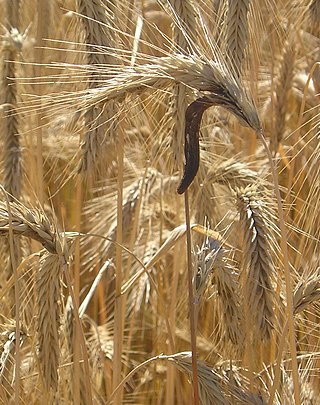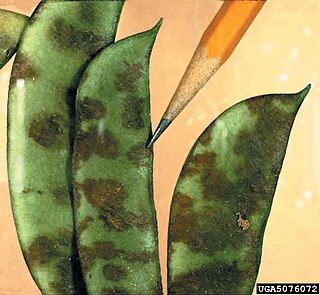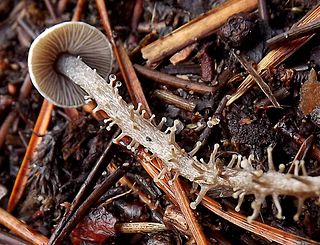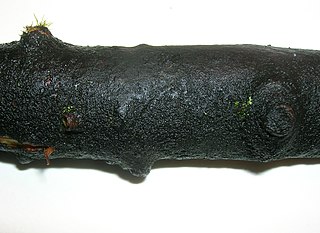
A pot still is a type of distillation apparatus or still used to distill liquors such as whisky or brandy. In modern (post-1850s) practice, they are not used to produce rectified spirit, because they do not separate congeners from ethanol as effectively as other distillation methods. Pot stills operate on a batch distillation basis. Traditionally constructed from copper, pot stills are made in a range of shapes and sizes depending on the quantity and style of spirit desired.

A barrel or cask is a hollow cylindrical container with a bulging center, longer than it is wide. They are traditionally made of wooden staves and bound by wooden or metal hoops. The word vat is often used for large containers for liquids, usually alcoholic beverages; a small barrel or cask is known as a keg.

Heaven Hill Distilleries, Inc. is a private, American family-owned and operated distillery founded in 1935 and headquartered in Bardstown, Kentucky, that produces and markets the Heaven Hill brand of Kentucky Straight Bourbon Whiskey and a variety of other distilled spirits.

A conidium, sometimes termed an asexual chlamydospore or chlamydoconidium, is an asexual, non-motile spore of a fungus. The word conidium comes from the Ancient Greek word for dust, κόνις (kónis). They are also called mitospores due to the way they are generated through the cellular process of mitosis. They are produced exogenously. The two new haploid cells are genetically identical to the haploid parent, and can develop into new organisms if conditions are favorable, and serve in biological dispersal.

A sclerotium, is a compact mass of hardened fungal mycelium containing food reserves. One role of sclerotia is to survive environmental extremes. In some higher fungi such as ergot, sclerotia become detached and remain dormant until favorable growth conditions return. Sclerotia initially were mistaken for individual organisms and described as separate species until Louis René Tulasne proved in 1853 that sclerotia are only a stage in the life cycle of some fungi. Further investigation showed that this stage appears in many fungi belonging to many diverse groups. Sclerotia are important in the understanding of the life cycle and reproduction of fungi, as a food source, as medicine, and in agricultural blight management.

Geotrichum candidum is a fungus which is a member of the human microbiome, notably associated with skin, sputum, and faeces where it occurs in 25–30% of specimens. It is common in soil and has been isolated from soil collected around the world, in all continents.

Colletotrichum lindemuthianum is a fungus which causes anthracnose, or black spot disease, of the common bean plant. It is considered a hemibiotrophic pathogen because it spends part of its infection cycle as a biotroph, living off of the host but not harming it, and the other part as a necrotroph, killing and obtaining nutrients from the host tissues.

Dendrocollybia is a fungal genus in the family Tricholomataceae of the order Agaricales. It is a monotypic genus, containing the single species Dendrocollybia racemosa, commonly known as the branched collybia or the branched shanklet. The somewhat rare species is found in the Northern Hemisphere, including the Pacific Northwest region of western North America, and Europe, where it is included in several Regional Red Lists. It usually grows on the decaying fruit bodies of other agarics—such as Lactarius and Russula—although the host mushrooms may be decayed to the point of being difficult to recognize.

Chlamydosauromyces punctatus is the sole species in the monotypic genus of fungi, Chlamydosauromyces in the family, Onygenaceae. It was found in the skin shed from frilled lizard. This fungus is mesophilic and digests hair. It reproduces both sexually and asexually. The fungus has so far not been reported to be pathogenic.

Willett Distillery Ltd, is a private, family-owned-and-operated company that produces bourbon and rye whiskey. Over the years, the company has bottled whiskeys that range from two years of aging maturity up to 28 years. The company was named Kentucky Bourbon Distillers (KBD) between 1984 and 2012.
Mycetophagites is an extinct fungal genus of mycoparasitic in the order Hypocreales. A monotypic genus, it contains the single species Mycetophagites atrebora.

Baudoinia is a fungal genus in the family Teratosphaeriaceae. It was created to hold the single species Baudoinia compniacensis, which was formerly known as Torula compniacensis. Four additional species were added to the genus in 2015. The genus was named in honor of the 19th-century French pharmacist Antonin Baudoin, who first recorded the description of a black, sooty mold that grew near distilleries in Cognac, France. The story of the rediscovery and renaming of this genus was told in an article in the magazine Wired in 2011.

Jefferson's Bourbon is a Louisville, Kentucky–based brand of bourbon whiskey which is distilled, blended by Kentucky Artisan Distillery (KAD) and distributed by the Castle Brands. The brand was first released in 1997.

Zasmidium cellare, also known as cellar mold, is a species of fungus that exists in dark, ethanol-rich environments and is brown to black in colour. This species primarily exists in wine and brandy cellars in central and southern Europe, but can be found in surrounding regions and is thought to be helpful in the wine making process by some and a hygienic issue by others. Not much is known about Z. cellare's sexual biology and is thought to be beneficial to the cleanliness of cellar air due to its ability to consume musty odours.
Amauroascus kuehnii is a fungus in the phylum Ascomycota, class Eurotiomycetes. It is keratinophilic but not known to cause any human disease. It has been isolated from animal dungs, soil, and keratinous surfaces of live or deceased animals.
Curvularia pallescens is a soil fungus, that commonly grows on crops found in tropical regions. The conidia of the fungus are distinguishable from those of related species due to their lack of curvature. C. pallescens has been reported to cause infection in plants, and in immunocompetent individuals. This species is the anamorph of Cochliobolus pallescens.

Mariannaea elegans an anamorphic fungus. It is mainly found on rotting wood and soil. M. elegans is not pathogenic to humans, animals, or plants.

Alternaria brassicicola is a fungal necrotrophic plant pathogen that causes black spot disease on a wide range of hosts, particularly in the genus of Brassica, including a number of economically important crops such as cabbage, Chinese cabbage, cauliflower, oilseeds, broccoli and canola. Although mainly known as a significant plant pathogen, it also contributes to various respiratory allergic conditions such as asthma and rhinoconjunctivitis. Despite the presence of mating genes, no sexual reproductive stage has been reported for this fungus. In terms of geography, it is most likely to be found in tropical and sub-tropical regions, but also in places with high rain and humidity such as Poland. It has also been found in Taiwan and Israel. Its main mode of propagation is vegetative. The resulting conidia reside in the soil, air and water. These spores are extremely resilient and can overwinter on crop debris and overwintering herbaceous plants.
Botryotrichum piluliferum is a fungal species first identified in 1885 by Saccardo and Marchal. It was discovered to be the asexual state of a member of the ascomycete genus, Chaetomium. The name B. piluliferum now applies to the fungus in all its states. B. piluliferum has been found worldwide in a wide range of habitats such as animal dung and vegetation. The colonies of this fungus start off white and grow rapidly to a brown colour. The conidia are smooth and white. B. piluliferum grows optimally at a temperature of 25-30 °C and a pH of 5.5.
Curvularia geniculata is a fast-growing anamorphic fungus in the division Ascomycota, most commonly found in soil, especially in areas of warmer climates. The fungus is a pathogen, mainly causing plant and animal infections, and rarely causing human infections. C. geniculata is characterized by its curved conidia, which has a dark brown centre and pale tapered tips, and produces anti-fungal compounds called Curvularides A-E.



















